In This Section
17 Patient Conference Report
IIH UK 2017 Laura Broomfield Patient Conference
Our 2017 Patient conference was held in Dalmuir, Clydebank, Scotland. The day started with a talk from IIH UK, Chair Shelly Williamson. She talked about the website, our social media platforms and the new Support forum which was launched this year to replace the old Support forum which was not mobile friendly. She talked about the 14 regional groups and how they are useful in helping IIH Patients find a doctor in their area with knowledge about IIH. She also mentioned the new Employment and Study support group which, although new, already has over 200 members. The IIH UK Support group now has over 3600 members and the North West group remains the most active regional group.
Shelly then went on to talk about how we are funded, we are a small charity with no paid staff and are funded by membership fees, donations, and fundraising. We also receive a small income from our online shop selling IIH awareness merchandise. Fundraising remains our biggest earner with over £17,000 being raised for us during the last financial year.

Shelly then talked about the research that IIH UK are involved in. Firstly she talked about the IIH Life Registry. The registry was developed by Dr Sinclair and her team of clinicians at Birmingham University, it is a database where clinicians can record everyone diagnosed with IIH which is now working well in Birmingham.Back in 2013 IIH UK committed to funding the registry beyond the initial funding date which has now ended at a cost of £5,000 per year. IIH UK have now funded years 4 & 5 but we want to raise £25,000 to fund it for an additional 5 years. It is important that the Registry runs for as long as possible as the data that the registry captures will help to guide research over the coming years.It is hoped that the data the registry captures would be able to indicate the optimal treatment for: 1. Sight Preservation. 2. Managing Headaches. 3. Improving IIH patients’ Quality of Life.
Shelly spoke about how IIH UK worked closely with Dr Sinclair and her team at Birmingham and that Trustees and Research Rep sit on the Trial Steering Committees for Birmingham’s Weight Trial, Drug Trial as well as the IIH Life Registry and also the IIH Guidelines that Dr Sinclair has been commissioned to write by the Association of British Neurologists.
She explained that the Weight Trial and Drug Trial are no longer recruiting. The aim of the IIH:WT trial is to assess if weight loss with the aid of bariatric surgery and/or dietetic intervention is an effective sustainable treatment for IIH, with sustained reduction of ICP, visual symptoms and headaches. The IIH:DT trial aims to prove that blocking the 11β-HSD1 enzyme will reduce the pressure in the brain and will hopefully improve symptoms, such as headaches and visual problems, seen in IIH. IIH UK continues to cover the travelling expenses of Weight Trial participants as they return for follow up appointments over the next 4 years. It is hoped that the results of the Drug Trial will be available within the next 12 months. Shelly reiterated to the audience of the need to find a cure and effective treatment for IIH patients and how important it was for Birmingham’s trials to be a success.
She then talked briefly about our association with other organisations, Namely Rare Disease UK, Neurological Alliance, Health and Social Care Alliance Scotland, James Lind Alliance and The Brain & Spine Foundation. She explained we had donated £500 to the Brain and Spine Foundation this year to help fund their telephone helplines which are staffed by neuroscience nurses. This is an area that we ourselves are unable to afford and we are extremely grateful to the Brain and Spine Foundation for allowing us to promote this very important service.
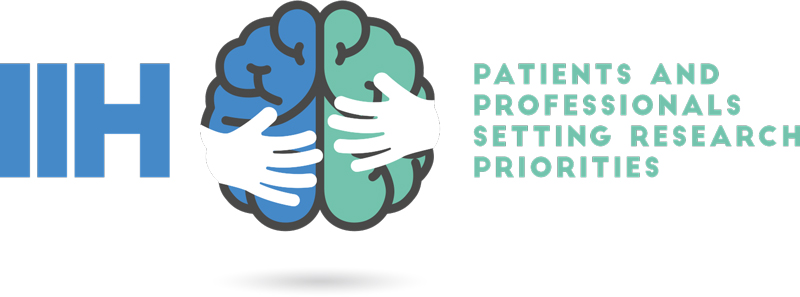
Shelly then went on to talk about ‘What’s next for IIH UK. The IIH Priority Setting Partnership with the James Lind Alliance is now well under way, we will keep you up to date with this on the JLA PSP area of our website. She then talked briefly about the Strategy we are developing where we will set out our current plans and show that they are sustainable. It will be a working document that can be reviewed and developed as we move forward.
We will continue to provide updates on trials and continue to work on the database of Neurologists/ Neurosurgeons and Ophthalmologists with an interest in IIH. We plan to promote and highlight any research, continue to build relationships with clinicians, continue to promote our aims to protect the physical and mental health of sufferers of IIH through the provision of support, education and practical advice and to advance the education of the public in general on the subject of IIH and to promote research for the public benefit in all aspects of IIH and publish the results. We will report the findings of the IIHUK/University of Derby surveyinvestigating painkiller use in individuals with IIH which closed earlier this year and lastly we enter phase two of our ‘Barriers to Weight loss and exercise survey’ which was put out earlier this year. This survey was developed by our Research Rep Krystal Hemmings in conjunction with Derby University with the help of Amanda Denton, IIH Patient and lecturer in neuro-habilitation at Plymouth University. They have used the data from this pilot survey to come up with a more focused survey that will be relevant to IIH patients. They are putting this together over the next few weeks, will then put it through ethics within the University of Derby and it will hopefully be ready to launch towards the end of this year.
Shelly ended her presentation by outlining the events that Trustees have/will be attending this year. Namely, the Rare Disease UK Conference and AGM, trial steering committee meetings, Neurological Alliance conference and AGM, IIH PSP meetings in collaboration with the James Lind Alliance, the Patient Voice in Ophthalmic Research Workshop and lastly the UK CSF Disorders Symposium which we fund each year and is attended by clinicians from all over the world.
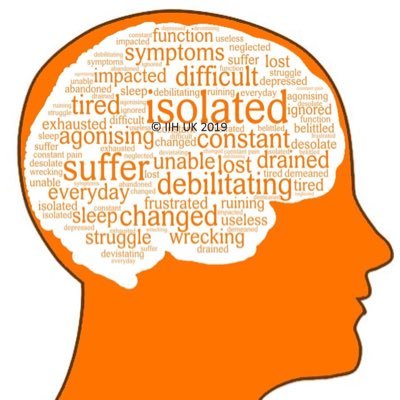
Shelly then went to talk about our involvement with the James Lind Alliance. Maryrose Tarpey, our JLA advisor, had hoped to do this presentation but her flight was cancelled so she was unable to attend.
Shelly started off explaining that James Lind was a 16thcentury Scottish Naval Physician who is credited with having carried out the first ever research trial. Sailors were plagued with scurvy; he split those on his ship into 6 groups and administered 6 different treatments.
He found that those sailors in the citrus fruit group were cured of their scurvy, a huge breakthrough at the time. She talked about what the JLA does, how it brings patients, carers and clinicians together as equal partners to focus on the causes, diagnosis, care provision and management of IIH. This is done by setting up a Priority Setting Partnership (PSP) The main aim of the PSP is to identify treatment uncertainties (questions about treatments that cannot be answered by existing research) and produce a list of those uncertainties, a ‘IIH top 10’ list. Finally the PSP inform researchers and funders about the priorities. IIH UK is funding the PSP. The PSP members include IIH UK Research Rep Krystal Hemmings as the lead. Maryrose Tarpey - JLA advisor. Shelly Williamson – coordinator and Dr Alex Sinclair – Clinical lead. She spoke about the steps involved and explained that we are currently at step 1, that is gathering questions via the survey. The questions cover four areas; causes, care provision, diagnosis and management. The next step will be to check the questions and put them into one of the 4 areas excluding any questions that do not fall into the scope and those already answered by existing research. Step 3 involves producing a list of these ‘unanswered questions’ which will result in a very long list! Step 4 involves getting everyone together to sort through, prioritise and finalise an ‘IIH Top 10’ list of research priorities of which patients, carers and clinicians agree want to be researched. An IIH Priority Setting Partnership document is then published that Research funders can access. Finally Shelly went on to explain that The James Lind Alliance have proved time and time again that this is an extremely effective way of spotlighting different illnesses that require much needed research.
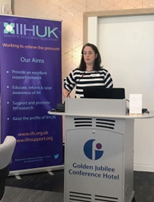
Unfortunately Dr Sinclair was unable to attend due to illness so Miss Susan Mollan, Clinical academic Fellow & Consultant Neuro-Ophthalmologist at UHB did her presentation ‘What’s new in research for IIH’. Susan talked about the challenges we all face in IIH such as; Poor understanding of what causes IIH. Weight loss ONLY clinically proven modifying treatment to put disease in remission. Really difficult to lose weight…and not regain it. Treatments for sight loss have no clear trials. Drug treatments for symptoms are not that great and are poorly tolerated and about how care around the UK is VERY variable. She then went onto talk about the areas of research that her team at UHBirmingham are involved in. The In-vitro & In-vivo studies being carried at IIH-Labs. The Database & bio-banking of the IIH-Life Registry. The National Guidelines & Education IIH-Guidelines, the IIH-WT and IIH-DT. She said that the Weight trial is still looking for healthy controls so if you know of anyone with a BMI ≥35 that does not have IIH and are interested in taking part in this very important study please ask them to get in touch with us. She also talked briefly about the JLA Priority Setting Partnership. The aims of these studies are; to understand the mechanisms, Treat before any sight loss, treat the head pain, Educate and inform the profession, prevent the disease. She then went on to talk about the mechanisms of intracranial pressure and its relationship to endocrinopathies, Corticosteroid therapy, Cushing’s disease, Addison's disease, Pregnancy and PCOS.
Susan then talked about a big study coming up in the United States by The Neuro-Ophthalmology Research Disease Investigator Consortium (NORDIC). The Stent v Shunt v Diamox Study is for those with moderate visual loss and is Federal funded which means that no one from the outside of the US can take part.
Lastly Susan talked about the September CSF disorders symposium. The guest speaker this year is Professor Grant Liu from Philadelphia and 'The Great Debate' is ‘IIH in children and adults is the same disease’. We will publish the report from this event to our website.
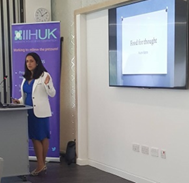
Next up to speak was Miss Ruchika Batra, Registrar in Ophthalmology, University Hospitals Birmingham and she spoke about a ‘Holistic approach to weight loss’. Whilst we realise that weight is an emotive subject among the IIH community we felt it was important for IIH patients to understand why weight loss is important for those people with IIH and have problems controlling their weight. Ruchikas presentation started with the symptoms of IIH and the emotions that IIH patients suffer as a result. She talked about how being positive towards the idea of weight loss is a big step in realising that losing weight has many other benefits and not just to help alleviate IIH symptoms.
She made clear the fact that she realises that not all people with IIH are overweight but the fact remains that around 90% of people with IIH are obese females, researchers are still unsure as to why this is but research has shown that weight loss can alleviate papilledoema and headache in IIH patients and has even ‘cured’ some people with IIH which is why IIH patients are told to lose weight. One of the slides from her presentation was titled ‘Diets make you fat and crazy’ which was met with a ripple of agreement from those attending.
She went on to explain why diets can be ineffective for weight loss, that dieting consistently leads to weight gain, that dieting intensifies cravings, it leads to food obsession and emotional distress and can also lead to binge eating. So how do we solve this crisis? She took us on a history lesson from cavemen to Elizabethan times to the 1950’s to the present day to help us find out. There was lots of interaction with the audience throughout this part of her presentation and she set them this task. 100% of delegates chose the meal plan on the right as the best plan to help them lose weight. We will return to this later. Ruchika then went on to talk about the different food groups and why they are important to include them all. Delegates learnt that carbs are an important source of energy, B vitamins and fibre. Protein is important for growth and maintenance of body structure and they make you feel full for longer. Dairy products are an important source of vitamins, minerals and protein. Fruit and vegetables provide vitamins and minerals (antioxidants) and increases fibre intake. Fats are a source of fat soluble vitamins; the 3 main sources of fat are saturated from animal products, polyunsaturated fats from vegetable oils and seed and monounsaturated fats from olive oil, nuts. Portion size was discussed which led onto ‘should we cut calories’? She explained that when we cut calories our bodies enter starvation mode in which fewer calories are burnt but once we increase our calorie intake the starvation mode persists causing us to gain weight, it’s a vicious circle and this is the example she gave: The more carbohydrate rich the meal the bigger the sugar spike… The bigger the insulin spike… The bigger the slump… The bigger the ‘brain fog and groggy feeling…The more the hunger…
Ruchika then talked about what happens when we eat sugar, whether it is sugar from carbohydrates, refined or artificial. She explained that sugar causes an insulin spike and it is insulin that makes us fat. Delegates learnt that sugar is 8 times more addictive than cocaine and the only way to tackle it is to cut out sugar all together, even the artificial ones. Ruchika then described the 9 steps to losing weight. Step 1, clear out your cupboards of processed foods. Step 2. Self respect - Value yourself. Tell yourself you are special. You deserve good food. You deserve more than junk food. Step 3. Drink plenty of water – Some delegates were surprised to hear that hunger and thirst send the same messages to your brain. You feel hungry so you grab a snack when in fact you may have been thirsty instead. Always have a glass of water when you feel hungry. Step 4. Fast overnight for 12 hours. This gives your body time to rest. Step 5. No processed junk, think about preservatives. Step 6. Eat breakfast every day, this wakes your body up and tells it it’s time to start burning those calories. Step 7. Hunger directed eating. Step 8. Use healthy fat to your advantage. Step 9. Use every opportunity to move. Most importantly delegates learnt about the importance of set mealtimes. Breakfast, lunch and dinner. Always sit at a table, eat your meals as if you are being watched by your boss/future mother-in law. Eat slowly as this give your stomachs stretch receptors time to work. From the first mouthful it takes around 20 minutes for those receptors to work, eating slowing allows this process to happen before you have over eaten. Also think about the food you are eating and enjoy it, always drink water whilst eating as this too will stop you eating too much.
Ruchika rounded off her presentation with a review of the ‘Pick a meal plan’ task that she mentioned earlier. Both plans were 1940 calories each. One was for 3 meals a day consisting of breakfast, lunch and dinner. The other was more familiar to anyone on a diet; it consisted of breakfast, snack, lunch, snack, dinner, and snack. Both meals have identical calories and delegates were very surprised to hear that the plan of 3 meals a day was inductive to losing weight whilst the other made people actually gain wait. The reason for this is that every time you eat your sugar level rises which in turn makes your insulin rise and it is insulin that makes fat. So in conclusion it is better to eat 3 home cooked healthy meals (yes, including the fats and sugars) 3 times a day than it is to eat processed ‘diet’ foods that are inductive to snacking.
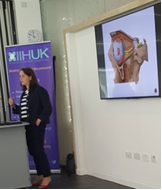
Delegates learnt that from a patient point of view OCT is a simple test, it is quick and painless which can be done on dilated or un-dilated eyes and is harmless. She then showed slides which explained how OCT was used to identify pap and how the presence of spontaneous venous pulsations of the optic nerve was a useful indicator. Lastly she spoke about new technology, OCT Angiography, which can look deeper into the optic nerve than ever before and talked of its current limitations, namely its availability, the number of platforms and differences in acquisition/software and doctors Interpretation of what they see.








